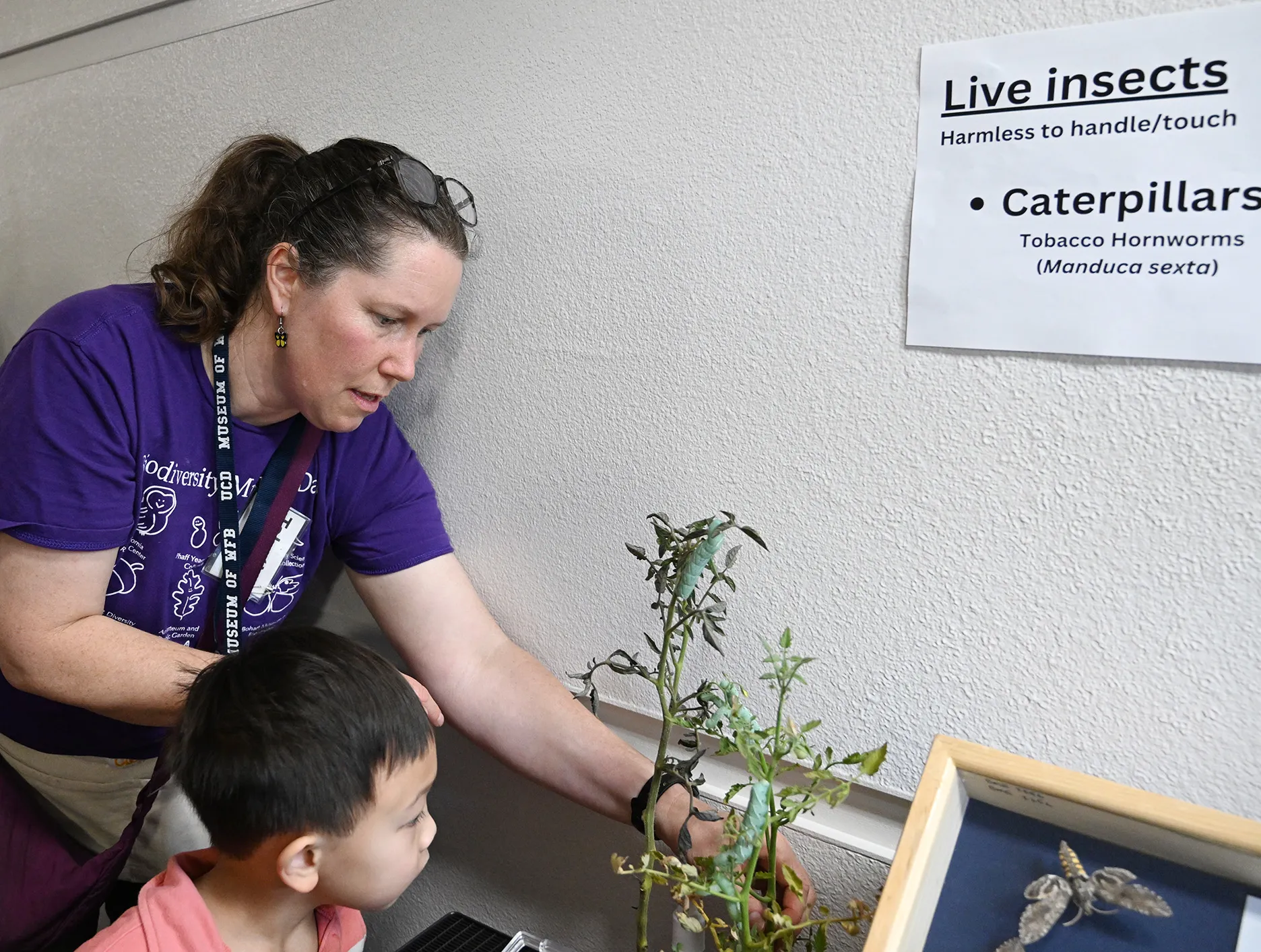
"My turn to hold the hornworm!"
Youth and adults alike clamored to hold the tobacco hornworms at the Bohart Museum of Entomology's Moth Night.
While attendees held the hornworms, other hornworms munched on a tomato plant. A display sign about Metamorphosis in the Garden read:
"Tobacco hornworms (Manduca sexta) are common pests on tomatoes, peppers, potatoes and other plants. They even frequent home gardens. Have you ever seen a tomato worm?" An illustration by the late Mary Foley Benson depicted the egg, larva (caterpillar), pupa and adult.
The larva is often mistaken for its cousin, the tomato hornworm, Manduca quinquemaculata. A good way to tell them apart is that the tobacco hornworm has red horns--and seven white diagonal lines with a black border. Tomato hornworms have dark blue or black horns--and eight V-shaped white markings with no borders, .
When the tobacco hornworm reaches its adult stage (if you let it), it becomes a Carolina sphinx moth, also known as the tobacco hawk moth. Jeff Smith, curator of the Bohart Museum's Lepidoptera collection, showed specimens of the sphinx moth to the crowd, while others lined up to hold the tobacco hornworm.
"My turn to hold the hornworm!"
(See more on hornworms on the UC Statewide Integrated Pest Management Program's website)

This was the last open house of the 2025-26 academic year.
The Bohart Museum, located in Room 1124 of the Academic Surge Building, 455 Crocker Lane, houses a worldwide collection of 8 million insect specimens. The museum also includes a live petting zoo (stick insects, Madagascar hissing cockroaches and more) and an insect-themed gift shop stocked with T-shirts, hoodies, books, posters, jewelry, pencils, candy, puppets, and insect-collecting equipment.
Noted UC Davis entomologist and professor Richard Bohart (1913-2007) founded the museum that now bears his name in 1946.
Director of the Bohart Museum is professor Jason Bond, the Evert and Marion Schlinger Endowed Chair of Insect Systematics, Department of Entomology and Nematology and the newly named executive associate dean of the UC Davis College of Agricultural and Environmental Sciences.
For more information on the Bohart Museum, access the website at https://bohart.ucdavis.edu/ or contact bmuseum@ucdavis.edu.

